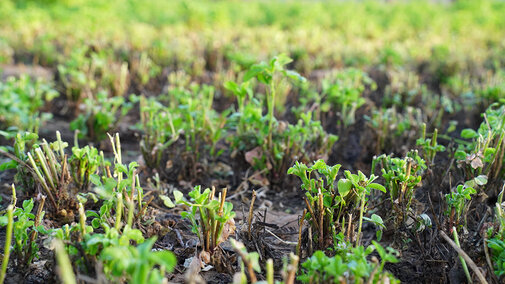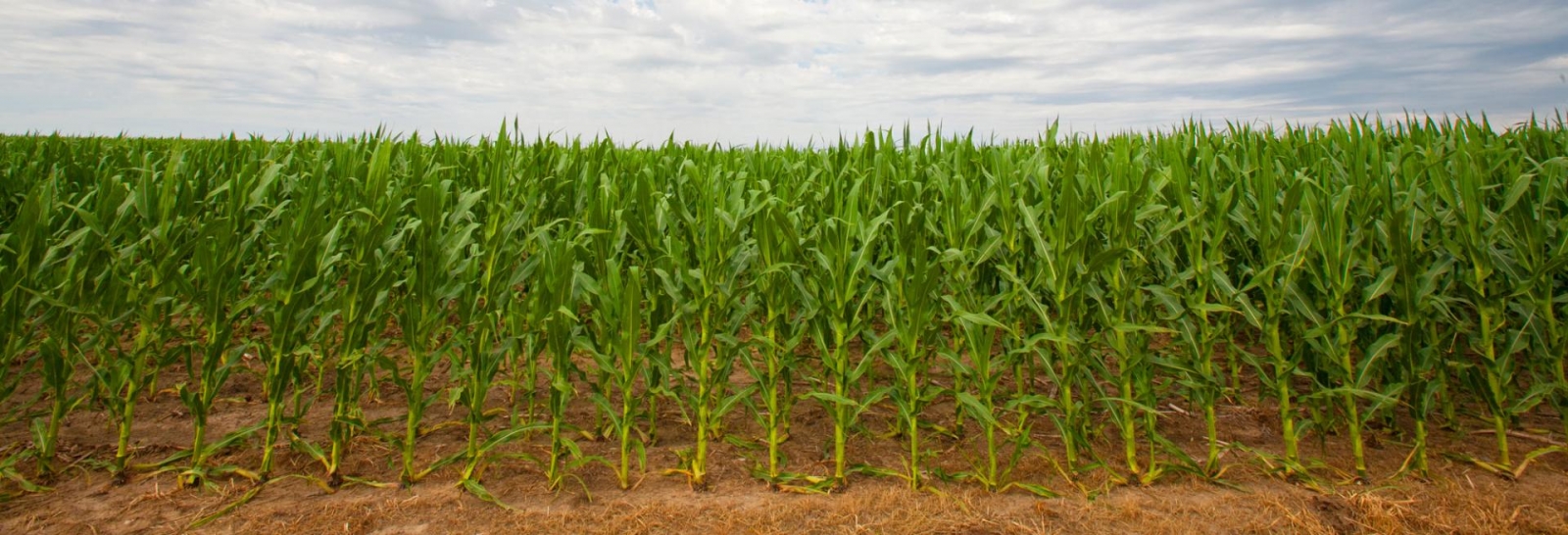Key Takeaways
Testing strategy: Soil test this fall and use results to guide phosphorus, potassium, sulfur. Tissue testing for some micronutrients like boron may be a better measure of deficiencies.
Application timing: Apply non-leachable nutrients in mid-October to early November, when possible, with spring or in-season top-dress as needed.
Economic return: Fertility is an input that typically pays back in yield, forage quality, and stand life — often at ratios of 2:1 or better.
Further guidance: For more detailed fertility guidelines, see Nebraska Extension NebGuide EC155, “Nutrient Management for Agronomic Crops in Nebraska.”
As harvest wraps up, October is an excellent time to collect soil test samples and plan fertility for next year’s alfalfa production. Because alfalfa removes large amounts of nutrients each year, fertility decisions made now affect stand vigor, forage quality and stand persistence across multiple seasons.
How Much Alfalfa Removes
The Nebraska Extension NebGuide EC155 on fertility, “Nutrient Management for Agronomic Crops in Nebraska,” provides estimated rates of removal for nutrients per ton of alfalfa produced (Table 1). Using these guidelines, a five-ton crop will remove roughly 50 lbs. P₂O₅, 300 lbs. K₂O, and 40 lbs. S. Multiply that over a four-year stand and the removal is substantial. Without replacement, soil nutrients are quickly depleted, regrowth slows, and winter survival is compromised.
| Nutrient | Removal (lb/ton) |
|---|---|
| Nitrogen (N) | 51 |
| Phosphorus (P₂O₅) | 10 |
| Potassium (K₂O) | 60 |
| Sulfur (S) | 8 |
| Calcium (Ca) | 30 |
| Magnesium (Mg) | 6 |
| Zinc (Zn) | 0.05 |
| Copper (Cu) | 0.02 |
| Manganese (Mn) | 0.12 |
| Iron (Fe) | 0.36 |
| Boron (B) | 0.07 |
Nutrient Priorities in Nebraska
- Phosphorus supports root growth and stand vigor. If soil test values are low (see Table 2), applying 60 to 80 lbs. P₂O₅ per acre in the fall is a good starting point. Detailed recommendations for specific soil tests can be found in EC155 or with help from your local extension office. Monoammonium phosphate (MAP – 11-52-0) or diammonium phosphate (DAP – 18-46-0) are common sources. Although MAP has less nitrogen, it is safer for banded or seed-placed applications than DAP.
- Alfalfa performs best at a soil pH of 6.5 to 7.5. Lime may be needed on soils below 6.2, especially in eastern Nebraska or sandy soils in north-central and western parts of the state.
- Other micronutrients such as zinc, manganese, iron, copper, molybdenum and nickel are generally not limiting for Nebraska alfalfa (Table 3). Deficiencies are rare, though zinc, manganese or iron issues may occasionally appear on high pH soils. Copper deficiency is essentially nonexistent; molybdenum levels are usually adequate for nitrogen fixation; and nickel is essential but has no documented deficiencies or fertilizer recommendations in Nebraska.
- Potassium is critical for stand persistence and winter survival. On fields that test below sufficiency (Table 2), 120 lbs. K₂O per acre from potash can make the difference between keeping a stand for four years versus replanting in year three.
- Sulfur is often limited on sandy or low organic matter soils (>1%), particularly in the Sandhills and northeast Nebraska. Applying 30-40 lbs. S per acre annually, often as ammonium sulfate or gypsum, corrects deficiency and helps maintain protein content. An alternative strategy is to apply sulfur less frequently at 100 lb. per acre once every three years rather than annually.
- Boron is also important for alfalfa, and while not commonly an issue, it’s one of the more common micronutrient deficiencies alfalfa growers may encounter. Tissue testing is the main method of determining application rates, which can fall between 1-3 lb. per acre every other year.2 Keep in mind that boron can be toxic to alfalfa if applied in excess. On irrigated fields, some boron may be supplied through the water and should be credited when determining the final application rate. If you have questions about boron application rates, contact your local Nebraska Extension educator.
Timing Applications
- Mid-October through early November is the best window for most phosphorus, potassium, sulfur and boron applications. Fall timing fits well with harvest schedules, allows nutrients to settle before a killing frost and supports early spring growth.
- Early spring, typically late March through April, is an option for sandy soils at leaching risk or where fall applications were missed. Fertilizer should be applied before significant spring growth begins.
- After the first cutting in late May or early June, there’s another opportunity to top-dress potassium or boron if soil tests are marginal or stands show deficiency symptoms.
- Following the last cutting in late August, a “winterizing” application of potassium and sulfur can help stands build reserves before dormancy.
Fertilizer Economics in Nebraska
Fertilizer is one of the bigger costs in alfalfa production, but under-fertilizing is often more expensive in the long run. In Nebraska, potash, MAP, ammonium sulfate and boron products remain significant inputs, yet each plays a role in yield and stand longevity.
Research shows that correcting deficiencies in phosphorus, potassium or sulfur commonly returns from $1.50 to $2.00 in forage value for every $1.00 spent on fertilizer. Boron is a relatively inexpensive addition, often less than $10 per acre, and can prevent yield losses valued at $40–$70 per acre. Potassium, while costly, protects stand life. One extra year of production can return $600 to $800 per acre in hay value — far outweighing a $100 fertilizer application. Even phosphorus and sulfur, though less dramatic, often pay back quickly through improved yield and forage quality.
The best way to target fertility dollars is through soil and tissue testing.
| Nutrient | Sufficiency Level (soil) | Notes for Nebraska Alfalfa |
|---|---|---|
| Phosphorus (Bray-P1) | 25 ppm or higher | Below this, yield response likely |
| Phosphorus (Olsen-P) | 14 ppm or higher | Use on high pH or calcareous soils |
| Potassium (Ammonium Acetate) | 150 ppm | Critical for persistence and winter survival |
| Sulfur | 10 ppm in top 2 ft. soil generally adequate | Deficiency is more likely on sandy, low OM soils |
| Nutrient | Sufficiency Level (soil or tissue) | Notes for Nebraska Alfalfa | |
|---|---|---|---|
| Boron | < 30 ppm in top 6 inches of plant. 0.5 ppm soil test. | Less common micronutrient deficiency in Nebraska alfalfa | |
| Zinc | No established soil critical level; tissue 20 to 70 ppm usually adequate | Deficiency rare in Nebraska alfalfa | |
| Manganese | Soil tests less reliable; tissue 25 to 100 ppm adequate | May be limiting on high pH calcareous soils | |
| Iron | Tissue 50 to 250 ppm generally adequate | Deficiency rare; chlorosis is possible on high pH soils | |
| Copper | Soil critical levels not established; tissue 6 to 20 ppm | Deficiency is extremely rare in Nebraska | |
| Molybdenum | No routine soil test; tissue 0.1 to 1.0 ppm adequate | Usually sufficient in Nebraska soils | |
| Nickel | No soil or tissue sufficiency range established | Essential for N metabolism, but no confirmed deficiencies in Nebraska alfalfa | |
Resources
- Shapiro, C. A., Ferguson, R. B., Hergert, G. W., Wortmann, C. S., Maharjan, B., Krienke, B., & Rees, J. M. (2023). Nutrient management for agronomic crops in Nebraska (EC155) (Revised ed.). University of Nebraska–Lincoln Extension.
- Purdue University. (2009, May 19). Boron deficiency threatens alfalfa yield, quality. Purdue University News Service. https://www.purdue.edu/uns/x/2009a/090519JohnsonBoron.html

